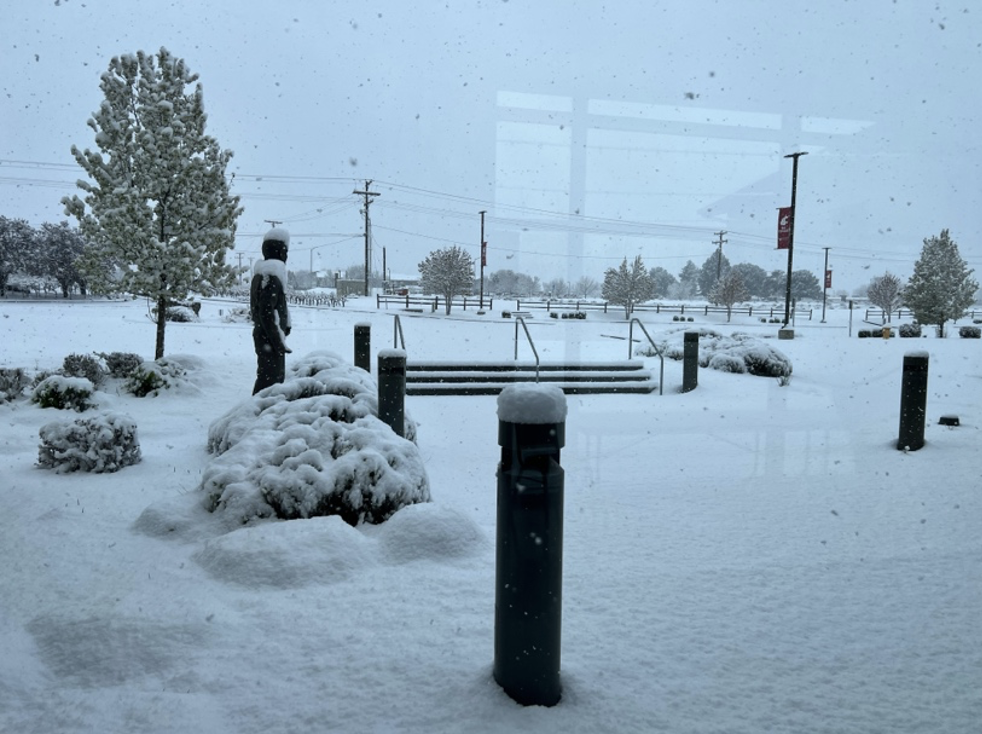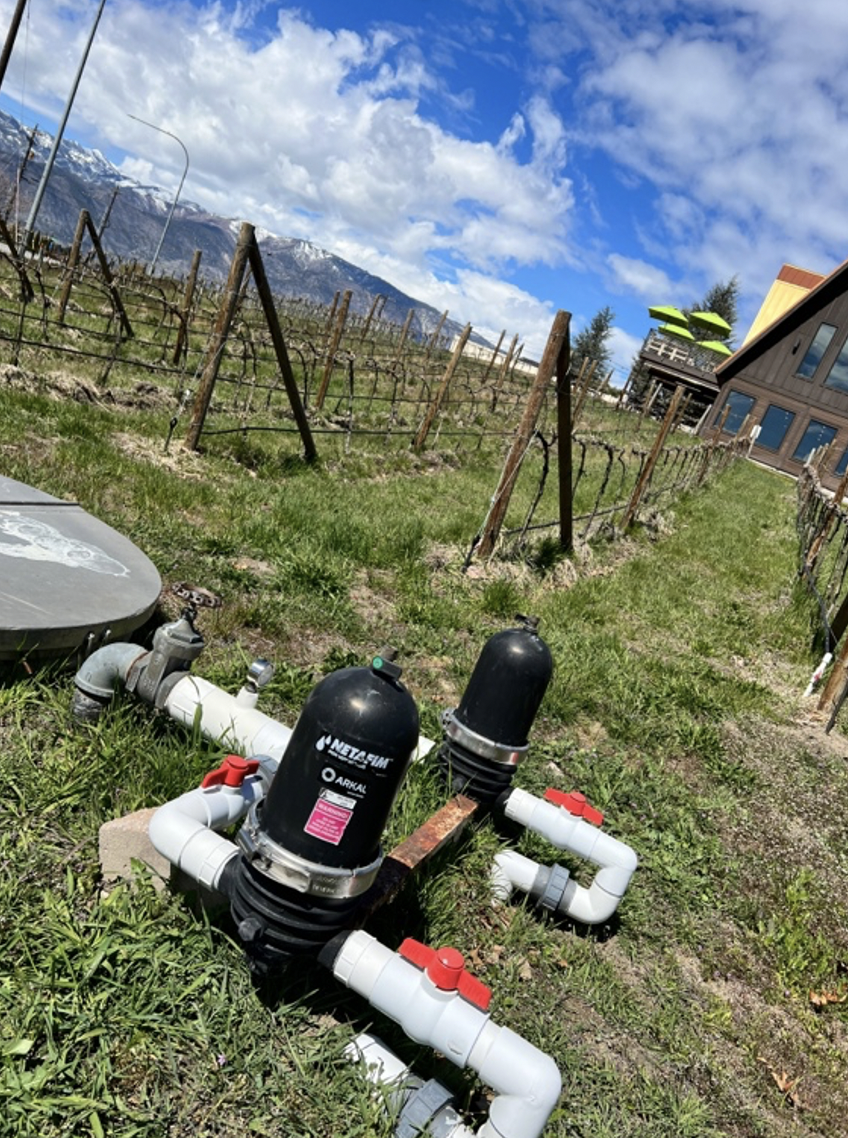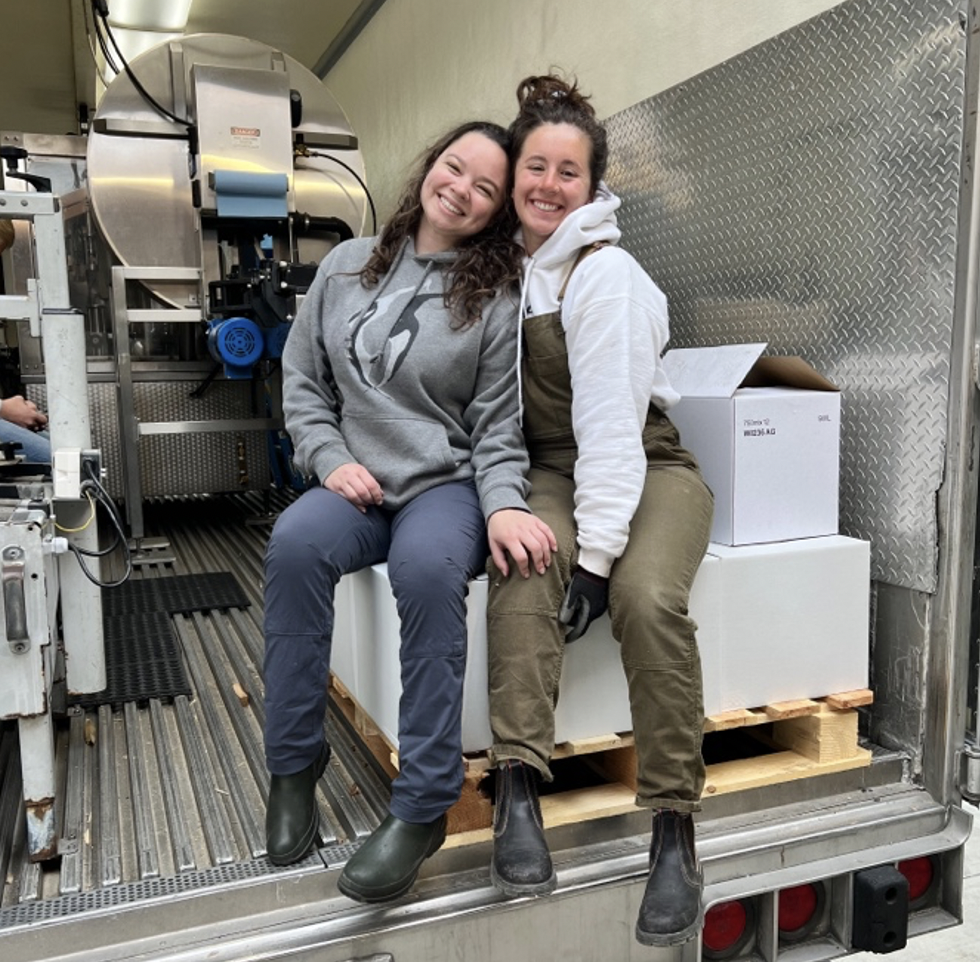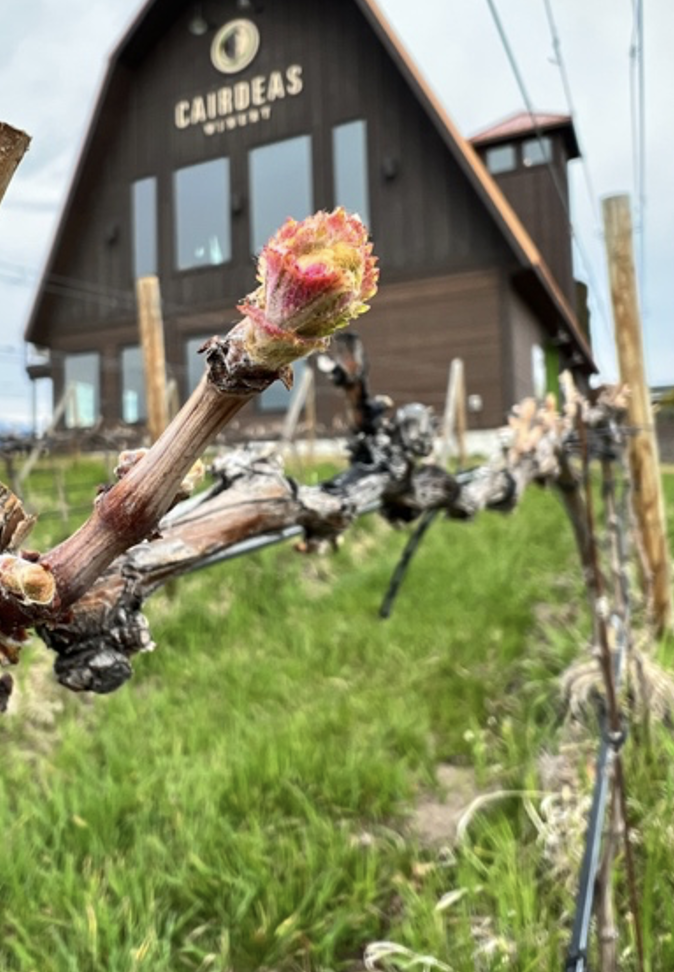The second story from Miriah Falce, Enologist at Cairdeas Winery in the Lake Chelan AVA.
Traducido por Laurita Angulo
El principio y el final del proceso de vinificación- otra vez
Soy yo, la chica que anteriormente dijo que no teníamos grandes eventos fríos de los que preocuparnos y que solo estábamos esperando la brotación … ¿traería la mala suerte? ¡Creo que todos podemos decir que el fenómeno que tuvimos este abril fue uno de los más extraños que jamás hayamos experimentado! Este mes ha estado lleno de experiencias de aprendizaje, todavía esperando la brotación y temperaturas en los 50, así que realmente no ha cambiado mucho aquí desde la última vez que escribí, pero estoy aprendiendo el arte de la paciencia y sé que llegaremos.

El Comienzo: Sangrado y brotación
Después de que podamos el mes pasado, el calentamiento del suelo significa que vemos una de las primeras señales de que las vides se despiertan, el sangrado/flujo de savia! A medida que el suelo se calienta, las raíces comienzan a extraer humedad de las profundidades en un esfuerzo por restablecer el equilibrio de la planta nuevamente después de la latencia. Hacer que la tubería se mueva de nuevo, por así decirlo. Como las heridas de poda aún no se han endurecido, la presión se acumula y lentamente gotea constantemente a través de las superficies abiertas. En un día soleado cuando todo el bloque está en movimiento, puedes mirar a tu alrededor y ver el reflejo de la luz en cada gota de cada espolón de cada vid. Puede ser todo un espectáculo. Notarás en la primera imagen que a veces el goteo constante empapa la madera.

Asistí a un evento de fungicidas en Hood River, Oregón, para aprender más sobre el moho polvoroso y la pudrición del manojo de botritis y quedé completamente asombrado al ver todas las flores de manzano y cerezo y lo brillante que era el valle de Yakima. He ahí mi impaciencia ya que todavía no teníamos nada de eso en Chelan. ¡La semana siguiente me desperté a 5 pulgadas de nieve y advertencias de temperaturas bajo cero! ¡Iba en el automóvil a las 5 a.m. camino a Prosser para otro seminario a través del Grupo técnico de vinos de Washington, por lo que no tengo fotos de la bodega, pero lo estaba viendo en todas las redes sociales!

Recuerdo años atrás cuando había advertencias de congelación (aunque mucho antes y nada como esto) y me despertaba por la mañana con el ruido de las máquinas de viento en mi patio trasero y el humo en el aire de las ollas de barro. Jaime y algunos de los otros muchachos del equipo estarían despiertos toda la noche, avivando los fuegos junto a las cerezas y haciendo funcionar los ventiladores para tratar de proteger los pequeños capullos y evitar que se congelaran. Cuando llegué a Prosser esa mañana, no pude evitar pensar en todos los granjeros, desde Walla Walla hasta Horse Heaven Hills y Prosser, luchando contra la helada, muchos de ellos en la brotación, que es el momento más crucial y cuando absolutamente no quieres una helada tardía porque puede arruinar los cultivos, y me di cuenta de que mi impaciencia era algo bueno y que nuestros cogollos cerrados y apretados estaban a salvo.

Vi fotos y videos de tantos colegas en sus viñedos a todas horas, y mi corazón definitivamente estaba con ellos. Sadie estaba tomando algunas medidas increíbles de protección contra las heladas, como usar los rociadores junto con las máquinas de viento, para mantener los cogollos aislados por medio de una capa de hielo que se mojaba constantemente para evitar que se congelaran, y sus fotos e historias son absolutamente fascinantes. ¡Mi mente no alcazaba a comprender que en algunos lugares en California ya estaban floreciendo y ya tenian un pie más de crecimiento!
Después del susto por el frío, aprendí a encender y lavar las líneas de riego para que estuvieran listas para usar. Todo el mundo por aquí dice que la brotación ocurre a mediados de abril y ya estamos muy cerca del final… pero todavía estamos un poco lentos y el 25 de abril encontré el único capullo en todos nuestros 3 bloques que finalmente estaba abierto. ¡Vamos Picardán! Hay algunas vides que están increíblemente cerca, probablemente dentro de uno o dos días, y Clairette Blanch y Syrah también están muy cerca.

El final: embotellado
¡Actualización rápida de la bodega, junto con todo lo demás que está sucediendo! ¡Embotellamos todos nuestros tintos de 2020 que mezclamos y trabajamos el mes anterior! No es factible desde el punto de vista financiero o espacial para las bodegas pequeñas tener una línea de embotellado de tiempo completo incorporada, y el proceso de “ordeñar” más lento y laborioso puede ser difícil dependiendo del tamaño del lote, ¡así que hay un gran invento llamado camiones embotelladores!

Hacemos 3 grandes embotellados al año por lo que poder programarlos junto con la preparación de las botellas y el corcho es perfecto para nosotros. Básicamente, el montacargas trae una paleta de botellas y una persona levanta y voltea una caja de botellas sobre la mesa, donde luego una segunda persona sostiene y sacude las botellas hacia el transportador. En este punto, el sistema de embotellado automático sopla el polvo de la botella, la llena, la tapa y la etiqueta, y la escupe por el otro lado, donde dos personas más revisan las etiquetas y las vuelven a colocar en las cajas. Bajan por una rampa donde se etiquetan las cajas y luego se colocan en paletas donde, una vez llenas, se envuelven y se trasladan al interior. Es todo un proceso, un día completo de pie, levantando y cargando cosas. ¡Tenemos un equipo increíble y mi querida amiga Bernadette incluso vino a ayudar! Después de mover dos lotes pequeños a nuestra fecha de agosto, ¡pudimos embotellar 62 botellas por minuto, 2561 cajas de vino, para un total de 30,732 botellas!

¡Tenemos un viejo llenador de 6 botellas que usamos para nuestro espumoso Clairette Blanche 2021! En mi último trabajo, viajaba a Gruet, la bodega de vino espumoso en Nuevo México y una gran razón por la que me encanta los vinos espumosos Methode Champenoise . Allí creábamos un gran cultivo de levadura al comienzo de las dos semanas, iba todas las mañanas a las 3 a.m. para el trabajo de viabilidad bajo el microscopio, y luego inoculábamos los tanques todos los días y embotellábamos al mismo tiempo que volvíamos a llenar el tanque de levadura. Aprendí bastante las veces que pude ayudar con eso y siempre es divertido poder trabajar con levadura para algo más que la cosecha.

¡Así que comenzamos nuestro tanque de levadura aquí y embotellamos dos días después! Ahora se sentarán
‘en tiraje’, lo que significa que el vino embotellado terminará la fermentación y se asentará sobre las lías (levadura muerta) para ablandarse, aumentar la sensación en la boca y los sabores secundarios, y envejecer.
También tuvimos nuestra fiesta Spring Wine Club en el granero con música y el increíble chef Aaron que viene de Surrell en Seattle, y un evento Bottle Your Own Magnum en la sala de degustación, así que ha sido un mes completo y divertido. ¡Y así terminamos en abril!




Join the Conversation